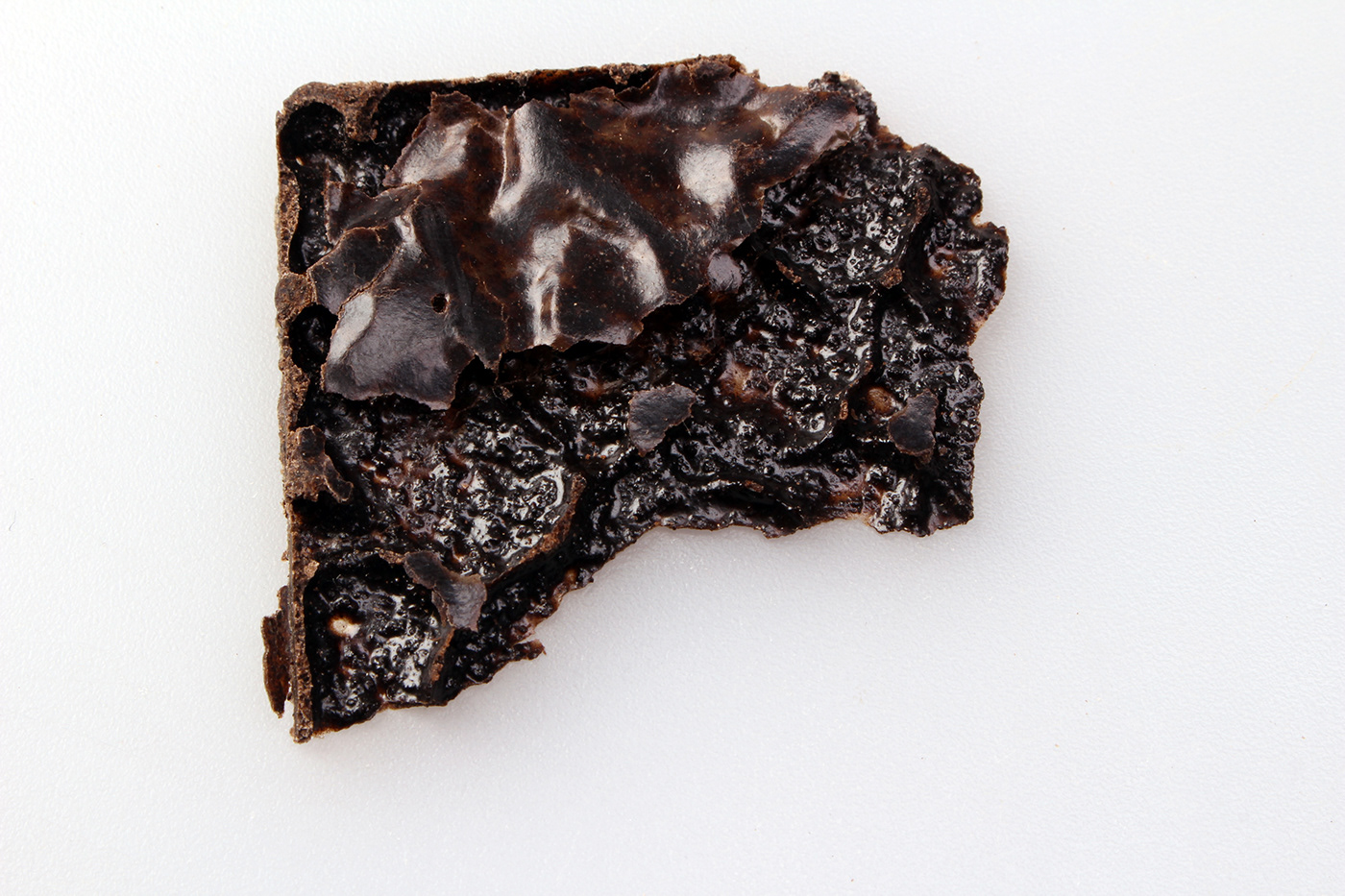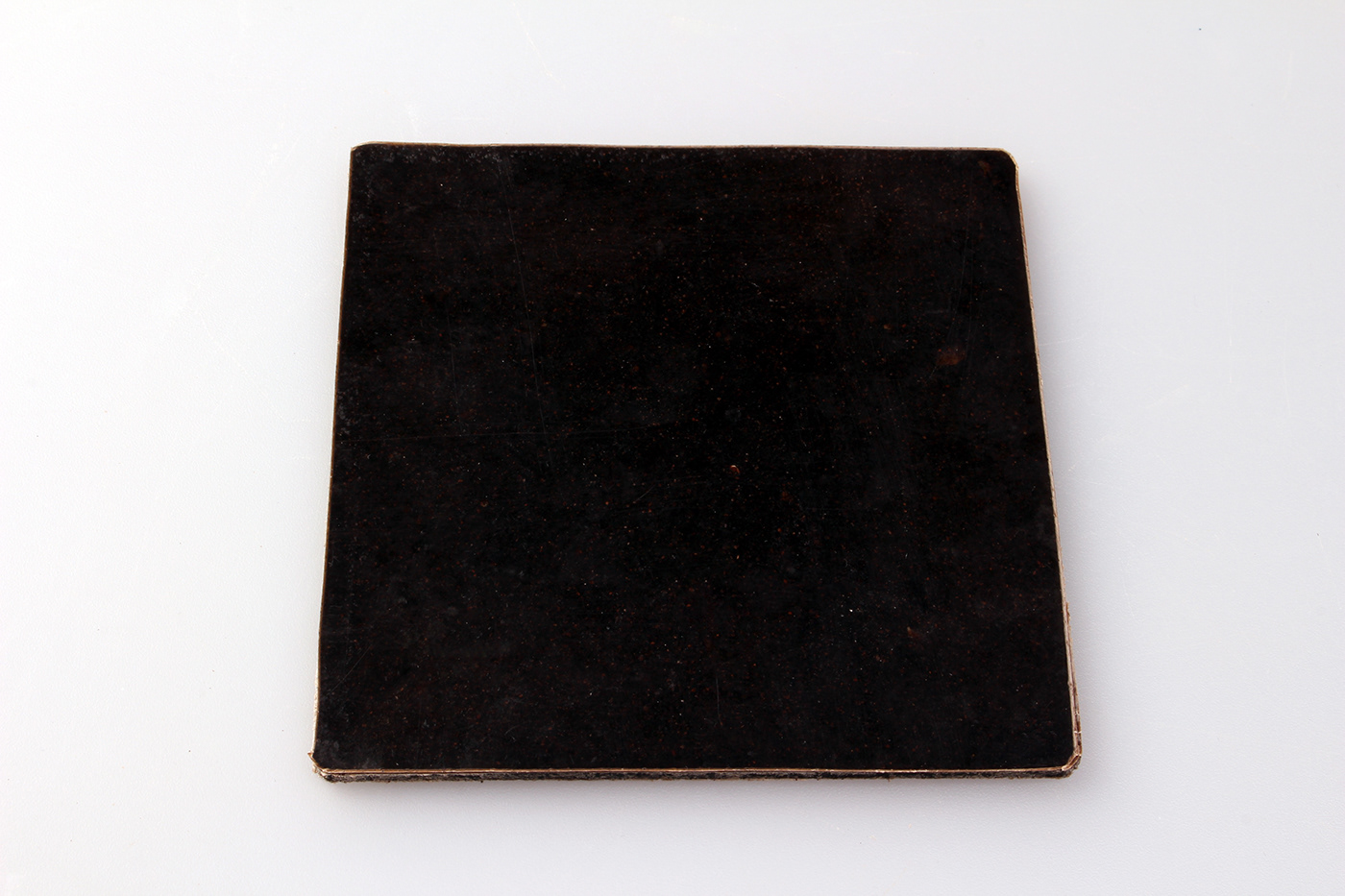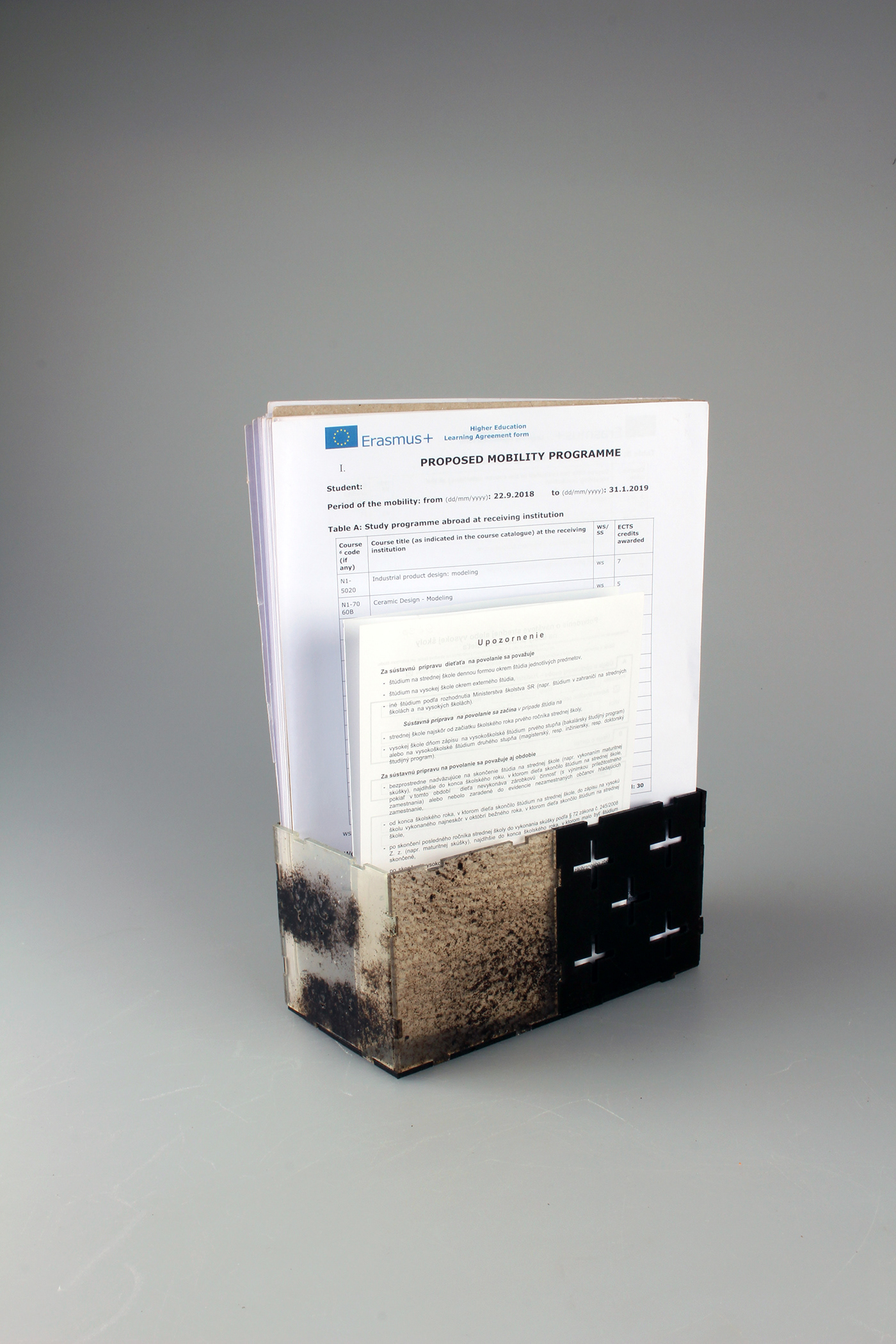Use of coffee waste in product design
The aim of this thesis was to come up with and design a product made of a material
that contains coffee waste and that is also ecologically safe and harmless for the environment. I mainly focused on the research conducted on the Faculty of food and chemical engineering, STU, in Bratislava. Based on the analysis, I designed a modular table organiser made of the created material, which is biodegradable. The organiser has a modular function and the whole process starting from the initial designing, product philosophy up to the final model in scale 1:1 is included in this thesis. The organiser is supposed to draw attetion to using organic waste and on ecological design without producing excessive waste.
that contains coffee waste and that is also ecologically safe and harmless for the environment. I mainly focused on the research conducted on the Faculty of food and chemical engineering, STU, in Bratislava. Based on the analysis, I designed a modular table organiser made of the created material, which is biodegradable. The organiser has a modular function and the whole process starting from the initial designing, product philosophy up to the final model in scale 1:1 is included in this thesis. The organiser is supposed to draw attetion to using organic waste and on ecological design without producing excessive waste.







The resulting material is stable after other products in the form of materials 3 mm and two large dimensions (110 x 110 mm and 150 x 150 mm). The material contains 20% coffee waste and is brown in color. Its smell is not very pronounced. Compared to boards that contain only PLA and a little coffee waste, the material is softer and more flexible, which allows it to cause faster degradation. The material, which contains only pure PLA, is more brittle and can be easily broken in the event of a fall, with a material containing 20% coffee waste taking advantage of flexibility. When cutting the material with a laser, it was found that there are air bubbles at the location and which does not have a constant thickness of 3 mm, nor is there a problem with its processing. This decision could be prevented by pouring more granules into the molds before compression. The resulting material can be used for various purposes.
The basic idea of the whole design was to create a material that will be stable and freely degradable in nature. Because the whole material consists of natural materials and is compostable, it prevents the formation of unnecessary waste. In today's consumer society, the most common problem is excess waste, which arises from the moment of production of the product to its purchase and subsequent wear. The product made by me does not generate waste and all parts that become redundant during its processing can be subsequently reused and reused, or we can compost them. I think it is important to take into account a problem such as waste generation and environmental pollution from the very initial design. Boards made of organic material, which I further used and processed, can have a wider use, not only for the product I created. The main idea was to show how and with a material solution we can replace the products that constantly create this excess waste. When creating the product, I also focused on the fact that the newly created material can have a wide range of uses in the so-called "fast fashion" environment, which is often associated with products that do not have long-term use and are discarded after a few uses. It can be largely advertising products or even products that are ultimately unnecessary, but everyone wants to own them for some reason. They could also be called necessary uselessness when we take the word necessary as something we want, but in the end it may just be a trend and a feeling that we own something. The need to own something material is often stronger than the idea that it will not have long-term use in our lives. I think it's normal and common for almost everyone who wants to make themselves happy by buying something they like. Many times these are things that need to be used only once or a few times and then never again. I wanted to appeal that all these products would, in my opinion, make more sense if, after their use and wear, or spoilage, they were not dumped, but rather composted. The product itself should thus affect a person's thinking and behavior towards society and the environment.













